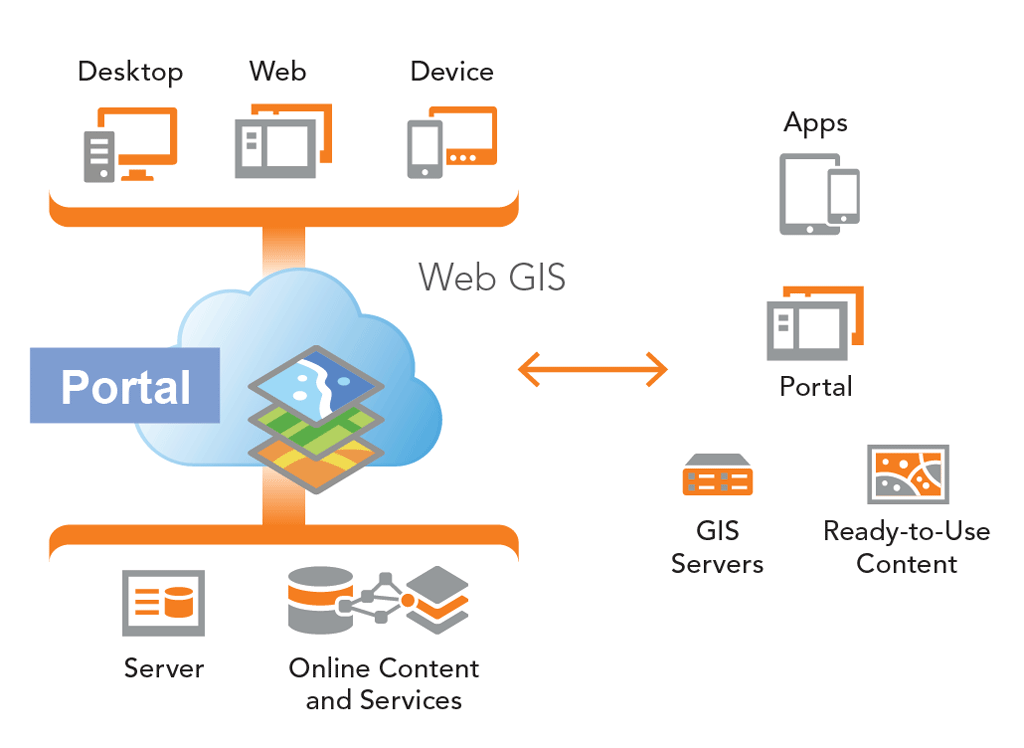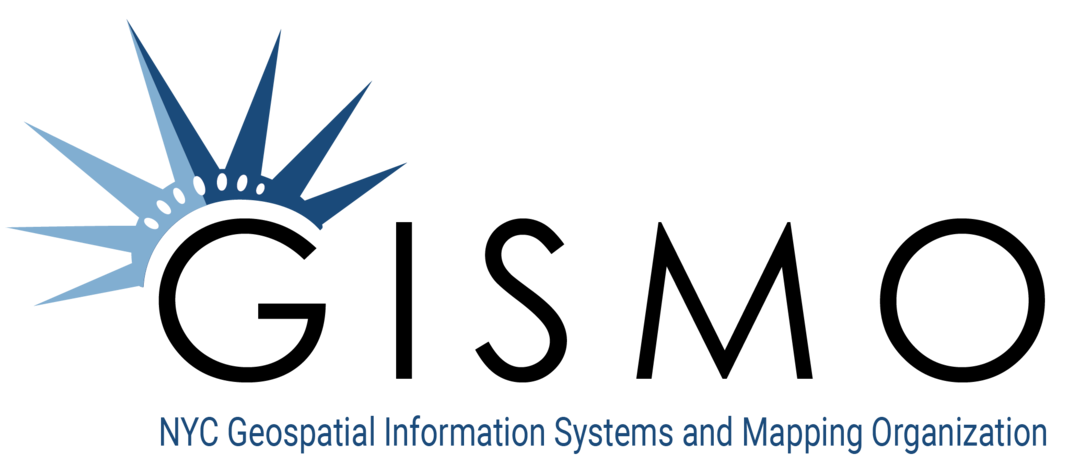
New York City government’s GIS platform, comprised of geodata, applications, software, processing capacity and accessible repositories, is also, in many ways, the foundation of GIS use by everyone else. NYC has only one geography and City government, thankfully, has made it its mission to build the critical spatial data that defines and describes our City.
GISMO, representing the entire NYC GIS community, has decided to weigh in on the City’s GIS platform in the hope that such an effort will make our City’s GIS use more effective for all. This link will take you to the GISMO “Guiding Principles and Policies for New York City’s Geospatial Architecture.“ This document was compiled by GISMO President Alan Leidner based on input from GISMO members and from national GIS leaders. Please read it and provide us with your comments. We want this Principles Document to be regularly improved and renewed as innovative technologies and capabilities continually transform our profession.
GISMO and the Hunter College Department of Geography held a forum, “The Future of GIS in NYC”, to discuss and debate the recommendations made in this document. View the forum from our archive of past events page.
Guiding Principles and Policies For New York City’s Geospatial Architecture
A Paper Developed by the New York City Geospatial Information Systems
and Mapping Organization (NYC GISMO)
Compiled By: Alan Leidner, NYC GISMO President, with thanks to numerous contributors 5.7.18
Geospatial Information Systems (GIS) are an essential component of New York City’s Information Technology environment. Major City agencies have GIS units and make heavy use of geospatially enabled applications that support operations, problem solving and decision making. With the advent of the City’s open data policy; businesses, non-profit organizations, community groups and individuals are increasingly accessing the City’s geodata and using it for many beneficial purposes. Many business startups offer new products enabled by the City’s location data, and spatial tools like Geosupport (NYC’s geocoding application). NYC’s Geospatial Information Systems and Mapping Organization (GISMO), founded in 1990, believes that there is potential for significant expansion in the use of geospatial systems over the coming years. GISMO offers the following Guiding Principles and Policies document to help plan for this expansion and create as many benefits for the citizens of New York as possible.
Governance
- Geospatial Leadership: Geospatial data and applications provide great value to City operations, including emergency response, 311, tax collection, and intelligence led policing; and promise enormous new benefits to the City in coming years. While geospatial systems are part of the City’s information technology portfolio, spatial systems are often misunderstood and underappreciated by IT professionals lacking a background in spatial data and technology. This is why New York City requires a Chief Geospatial Information Officer (CGIO) at the Deputy Commissioner level who can articulate a GIS vision, and ensure that geospatial systems are given the attention and resources they deserve for the critical value they provide. The CGIO could well be placed in the City’s Department of Information and Telecommunications Technology (DOITT), which has had the responsibility for advancing City GIS efforts over the past twenty years.
- Interagency Collaboration and Cooperation: The power of geospatial systems comes from their ability to exchange and integrate standards-based data across silos, agencies and organizations. Almost every City agency uses geospatial applications, and most agencies have developed data sets that reflect their responsibilities and operations. Yet there are no comprehensive mechanisms for agencies to communicate, and to share their geospatial assets. One of the functions of a City CGIO would be to convene regular meetings of GIS leaders from all agencies so that enterprise planning and collaboration will be more inclusive, informed and effective. Such meetings can eventually come to include representatives of organizations outside of municipal government. The ability to integrate data throughout the City and across the Metro region to support new applications, to solve problems and support operations, can yield profound benefits, but first people need to be regularly speaking to each other. For reference, see the National Geospatial Advisory Council (NGAC) https://www.fgdc.gov/ngac , and the NYS Geospatial Advisory Council https://gis.ny.gov/coordinationprogram/workgroups/details/index.cfm?ID=10 .
- Geospatial Strategic Plan: The City CGIO should produce a Geospatial Strategic Plan that takes into consideration key elements of this paper. The Plan should make clear to the entire geospatial community both within and outside government, the City’s approach to creating an effective, efficient and flexible GIS environment for all users, one that takes advantage of the most effective technologies, and incorporates industry best practices. See Washington D.C’s GIS Strategic Plan as an example: https://octo.dc.gov/publication/dc-gis-strategic-plan-2016
- Our Regional Context: New York City is part of a larger region that includes portions of three states and dozens of suburban and rural counties. While ecological, economic, transportation, public safety and other systems overlap political boundaries, geodata generally remains stuck within jurisdictional silos creating obstacles to cooperative work. The City CGIO and staff should systematically reach out to their counterparts across the region to promote data sharing, disaster planning, analytics and joint problem solving.
- NYC: A World Leader in Geospatial Technology: From the mid-1980’s onward, starting with the leadership of the Department of City Planning, New York City recognized the value of geospatial systems and built cutting edge resources and applications that have helped the City realize hundreds of millions of dollars in benefits and vastly improved operational efficiencies. (Often, NYC spatial initiatives were spurred by advances we saw being made in cities across the U.S.) New York City government is now opening up its geo-enabled data and the tools for public use. Besides benefits to non-governmental businesses and non-profit organizations, these capabilities can also be leveraged by new business startups that are looking to provide innovative products and services that have a “location” component. New York City has a number of competitive advantages that make it reasonable to expect that the City can become a magnet for new geobased, location oriented companies and the jobs they bring. New York has a number of colleges and universities that offer geospatial degrees and training including Hunter College, Columbia University, NYU, Pratt Institute, Lehmann College, Bronx Community College and Manhattan Community College. Students graduating from these programs can satisfy the personnel needs of new geo-businesses. Also, because of the large, high density population and the concentration of businesses and organizations in the NYC region, new startups have a fertile environment within which to launch new products and services.
New York City government is often eager to take the lead on new types of solutions, products and services. For example: NYC, along with other participating cities, aided by the Fund for the City of New York, and working with the Open Geospatial Consortium (OGC), is currently supporting international efforts to develop data standards for the mapping of underground infrastructure networks and the underground environment (soils, water table, bedrock, foundations). The City was also one of the first to develop crime fighting techniques based on the mapping and analysis of crime incidents (NYPD’s CompStat application). As new approaches to solve problems evolve in NYC, so do opportunities to start new businesses and to work collaboratively with City government.New York City has been characterized by industry experts, as one of the major GIS centers in the U.S., an opinion GISMO shares. We believe the time has come to establish a NYC GIS Center for Resources, Jobs and Research that brings together all the City’s GIS advantages in ways that create economic opportunities and advance the use of geospatial capabilities.
Data
- Framework/Foundation GeoData Maintenance and Integrity: It is of utmost importance that the data and systems that provide accurate spatial location identity to data records such as photography, coordinates, address, building identification number, parcel number, street segment and elevation, be as accurate and up to date as possible. This requires proper funding for the maintenance of all component parts of the Geosupport system (relating geo-coordinates to street segments, addresses, parcels and BINs) and regular refreshment of City imagery and LiDAR. Because New York City was an early user of geospatial systems, some of its most important applications reside on older platforms that while continuing to serve the City well, could be more effective and so should now be candidates for modernization. It is important that the City upgrade essential geospatial capabilities to incorporate current industry and IT best practices, so it can continue to provide superior services to a growing and increasingly diverse customer base.
- Open Standards for Maximum Interoperability: City geodata must adhere to common open standards, minimizing the amount of proprietary data types and APIs, and ensuring that spatial data from across the enterprise, via standard services, can be rapidly brought together, seamlessly integrated and effectively utilized for a variety of visualization and analytic purposes. At the same time, steps must be taken to guarantee that highly sensitive data is appropriately protected. GIS software selection should be based in significant measure on compatibility with and support for data meeting common open standards that promote seamless interorganizational sharing. The work of the Open Geospatial Consortium must be mentioned in this regard. OGC is the international geospatial standard setting body. They have been working since 1994 to enable the interoperability of spatial data from all possible sources. ogc.org
- Metadata: Metadata is information that describes the characteristics of data sets such as accuracy, currency and completeness. It provides essential knowledge about the reliability and limits of data and how to most effectively utilize it. While some geodata on the NYC Open Data website has excellent metadata, many of the geodata sets have no metadata at all or provide very limited information. The creation and maintenance of high-quality metadata, in a City-standard format, should be required of all City agencies developing geodata for both internal use and for sharing. Beyond City agencies, other organizations that develop geodata sets should also be asked to create metadata in the same standard format to support instances when geospatial data from multiple sources must be brought together. A specific but flexible metadata schema enhances data usability across domains.
- Geo-Data Accessibility: NYC was among the first cities to enact open data laws and to make its data available to the public. The City’s GIS efforts have also led to the creation of a large body of authoritative geodata that can serve as a foundation for GIS use by the public. The City has moved forward aggressively and wisely to make this municipal data available to individual citizens, businesses, non-profit organizations, community groups and other NGOs. However, a gap has developed between the availability of geodata, applications and tools; and their usability; so that only a very small minority of individuals and organizations actually take advantage of these resources. The City’s geospatial data and applications architecture must be designed to accommodate increased public use of these resources, making access easy, fast and as user friendly as possible. Therefore, it is recommended that open data portals and related access to geospatial tools be designed to maximize simplicity of use. Features of an open data utility could include intuitive dashboards, menu based analytic and mapping options, and one stop shopping for data that has already been integrated. Advanced analytics and visualizations may always require special technical expertise, but to the extent possible geospatial capabilities should be made easy to learn and use by as many people and organizations as possible.
- Emerging GeoData: We are currently witnessing a vast increase in variety, velocity and volume of geodata as the digital revolution continues to expand and innovate. Evolving geodata sources include new classes of air and ground sensors, wearables and the internet of things (IoT), underground utility and environment data; LiDAR, imagery and other remotely sensed data; vehicle telemetries, social media, mobile computers and smartphones, and building information modeling (BIM). The City’s geodata architecture and staffing must be designed to scale up to handle these increasing volumes and types of data, while also ensuring maximum interoperability. One day soon we hope to be able to model the entire built and natural environment including every significant object within it, because all data sources and types will follow common OGC standards that allow the information to be used together: from reservoir to kitchen faucet, from power generating source to electric vehicle recharger.
Operations
- Scaling Up During Emergencies: The New York City Department of Emergency Management has been widely acclaimed for the City’s geospatial response to both 9/11, Hurricane Sandy, and to other emergency incidents. However, during such events, usage of City geo-systems can spike significantly. In the past, City systems, due to limited capacity, have been overwhelmed by these increased volumes. The City’s geospatial architecture must be designed with the ability to scale up rapidly should it be necessary to handle massive increases in demand. In today’s climate of rapid technological innovation, there are many companies building on open, scalable cloud platforms that can provide almost unlimited increases in capacity when needed, along with significant operational improvements and costs savings.
- Store Geodata At Its Source: Many geospatial datasets, particularly framework and foundation layers, are constantly being edited. It is highly inefficient to store this data in every one of the potentially hundreds of locations where it is being used. When this occurs, remote users find that their versions of critical geodata sets rapidly deteriorate in quality as updates are made by data owners that are not automatically provided to dependent applications. A centralized data store should be designed to enable datasets to be consumed interactively, as a service, from a single, authoritative source. This ensures that end users are always utilizing information with the highest accuracy, completeness, integrity and timeliness.
- Integrated Data Storage: There is no reason why spatially enabled data should be dealt with separately from data that does not have spatial attributes. By storing both data types in a common storage architecture, any and all data can be easily brought together to support analytics and modeling. All major relational database software packages have provided native spatial data types for a decade or more, and extend SQL with spatial analytic capabilities.
- GeoData Combinations Creating Data Intelligence: With hundreds and eventually thousands of geo-enabled data sets available for access, integration, analysis and modeling in any combination thought to be useful; location-based analytics offers enormous promise for finding new insights and solutions to our challenges. While attention has been lavished on “big data analytics” (including artificial intelligence and machine learning) there is little awareness that “big geodata analytics” has been practiced effectively for decades. A coordinated effort made by researchers across the City – in colleges, communities, government agencies, NGOs and industry – can identify those combinations of data that offer the greatest promise of creating value. Such a data combination “Manhattan Project” could serve as the launching pad for new startups and the empowering of existing businesses. At the same time GIS professionals need to be increasingly grounded in the fundamentals of computer science.
Getting the Word Out/Training
- Educate the Public: New York City has every right to be proud of its Enterprise GIS, developed over the past forty years. However, for most New Yorkers this achievement has been a best kept secret. Now, NYC open data policies are making geospatial information resources available to the public in record amounts, but few are aware of the potential value to their businesses, communities and to themselves. The City, working with the greater GIS community, should have a strategy to publicize its GIS achievements and educate the public about the usefulness of geospatial capabilities.
- Geospatial Training: Knowledge of geography and of the special qualities and powers of geospatial data and analysis is vital to understanding the world and functioning effectively in it. Geospatial skills are needed in many jobs and will only increase in value over time as the use of geospatially enabled applications increases. Geographic and geospatial knowledge should be taught from the early elementary school grades through high school. Additionally, adult tutorials and courses should be designed for anyone wishing to take advantage of freely available geodata, applications and tools. Where possible, such education should include field work in our City and region, so that understanding of maps is enhanced by understanding of the real world. Of note is the exemplary work being done by the American Geographical Society (AGS: http://americangeo.org/ ), a national organization based in NYC, which is working on several initiatives to support HS geography teachers and expand student geospatial education options.
Special thanks to Dr. Mary McCormick and the Fund for the City of New York for their support of this effort.
Special thanks also to Dr. Jack Eichenbaum for contributing valuable insights and opinions to this document.

